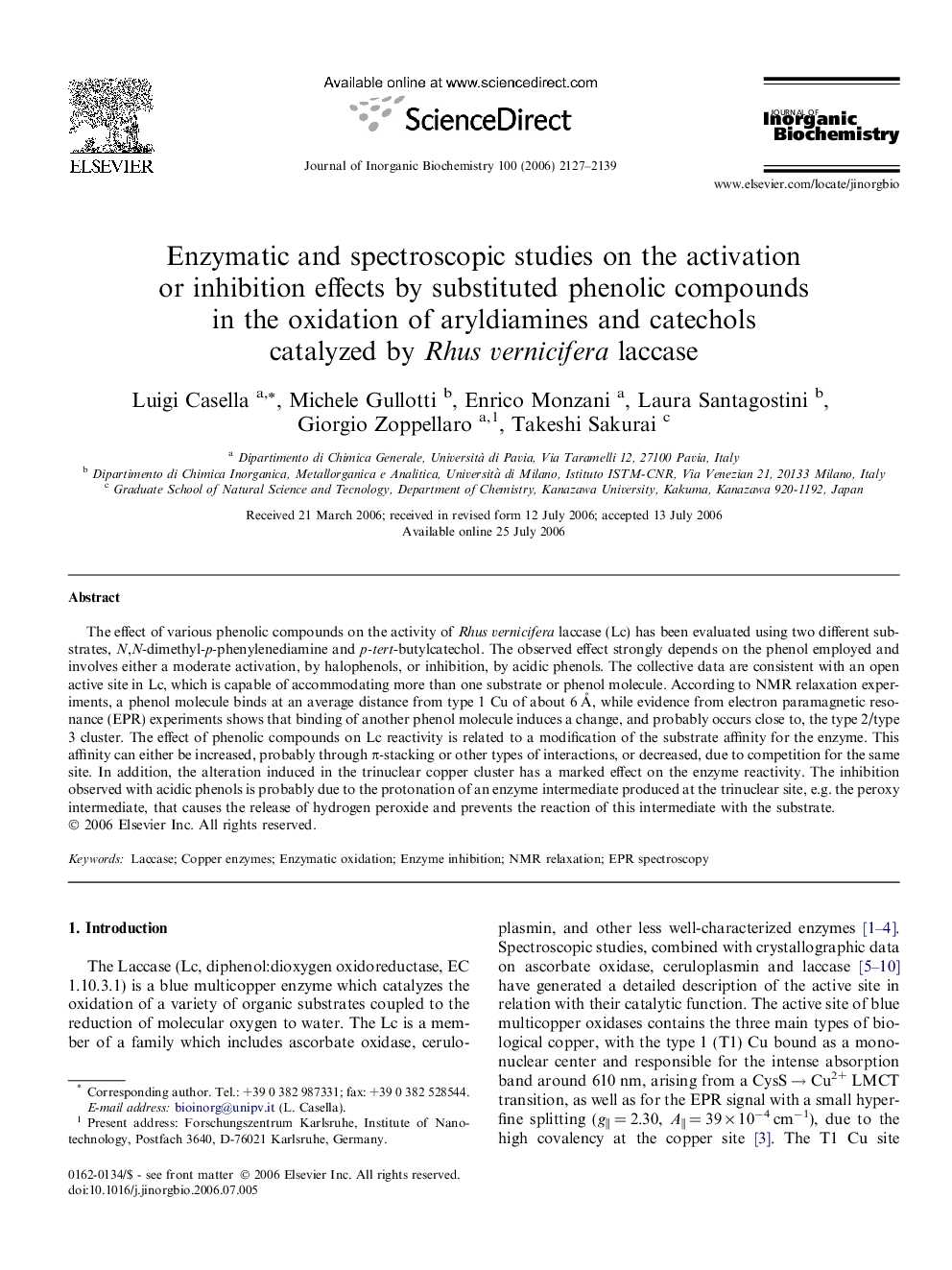| Article ID | Journal | Published Year | Pages | File Type |
|---|---|---|---|---|
| 1318176 | Journal of Inorganic Biochemistry | 2006 | 13 Pages |
The effect of various phenolic compounds on the activity of Rhus vernicifera laccase (Lc) has been evaluated using two different substrates, N,N-dimethyl-p-phenylenediamine and p-tert-butylcatechol. The observed effect strongly depends on the phenol employed and involves either a moderate activation, by halophenols, or inhibition, by acidic phenols. The collective data are consistent with an open active site in Lc, which is capable of accommodating more than one substrate or phenol molecule. According to NMR relaxation experiments, a phenol molecule binds at an average distance from type 1 Cu of about 6 Å, while evidence from electron paramagnetic resonance (EPR) experiments shows that binding of another phenol molecule induces a change, and probably occurs close to, the type 2/type 3 cluster. The effect of phenolic compounds on Lc reactivity is related to a modification of the substrate affinity for the enzyme. This affinity can either be increased, probably through π-stacking or other types of interactions, or decreased, due to competition for the same site. In addition, the alteration induced in the trinuclear copper cluster has a marked effect on the enzyme reactivity. The inhibition observed with acidic phenols is probably due to the protonation of an enzyme intermediate produced at the trinuclear site, e.g. the peroxy intermediate, that causes the release of hydrogen peroxide and prevents the reaction of this intermediate with the substrate.
